Venus' Dressing
Signed and dated on the left Morel - Ladeuil inv and fecit 1876 and on the right Elkington
Plate in metal with bas-relief, cm diam. 33
George Richards Elkington (17 October 1801 - 22 September 1865) was a Birmingham manufacturer who patented the first commercial electroplating process, producing both rounds. The round is the work of Léonard Morel-Ladeuil (Clermont Ferrand, 1820 - Paris, 1888), a French goldsmith and sculptor who was one of the most important "designers" of the English company. Napoleon III also appreciated it, giving him numerous commissions, but the merchants, annoyed that a craftsman obtained commissions directly from the king, boycotted the young artist and his vase, Dance of the Will, preventing its sale. He was encouraged by a foreign merchant in Paris, Marché, who employed him on statuettes, mainly of a religious nature, until 1859 when the Elkington family, in view of the Great Exhibition of 1862, offered him a job in their factory in Birmingham. Morel-Ladeuil remained with the company for twenty-three years, the first result of his masterpiece, the Shield of Milton Paradise Lost (in steel repoussé and silver), flagship of the Paris Exposition of 1867, then purchased by the English government for £3000, Distributing thousands of copies produced with the innovative technique of electroplating all over the world. The technique known as repoussé or repoussage, instead, consists in working metals where a malleable metal is decorated or shaped by hammering from the back to create a profile in bas-relief, a technique with which the two original rounds were made.A copy of the round is kept at the Victoria&Albert Museum in London, while the original was made in silver as a flagship work of the Elkington&Co stand for the Philadelphia exhibition in 1876. Following the event, the producer received numerous commissions from the same and then exhibited at the 1878 Paris Exposition, bearing on the back the wording of the manufacture and the copywright translated into four languages. Morel-Ladeuil’s work is composed of only 35 pieces, which however fully reveal his elegant and refined fantasy and grace, his feeling for a correct and delicate ornament and his love for pure art marked by a rather sentimental taste and noble style, full of details and clearly defined, proving to be a great artist and master craftsman. Elkington’s visitor books (which are in the National Library of Art) collect copies of the Pompeian Girls made for clients two years after the Philadelphia Exhibition and the Paris Exhibition. In 1904 a book about his life mentions: "For the Universal Exposition of 1876, in Philadelphia, Morel-Ladeuil prepared an important work of art, a large circular plate in golden silver with bas-relief, The Toilet of a Pompeian lady ... " Pompeian toilet quickly became very popular, the grace of the figures and harmony of composition enchanted the public; Other artists, critics and people of taste have admired the extraordinary control that has allowed the artist to shape the central figurative group in the repoussé bas-relief. The press in America, England and France has declared that the work is one of the most important and beautiful in the exhibition. The original work of art was not sold, but numerous reproductions of electrotypie were purchased in England and America.(Léon Morel, L'Oeuvre de Morel-Ladeuil, Sculpteur-Ciseleur, 1820-1888, A. Lahure, Paris, 1904, pp. 24-25). Upon the death of Morel in 1888, the factory took a worthy and able successor Mr. Thomas Spall. His most important piece is "Virgilio", a silver shield made by the factory of Mr John Watkins in Birmingham and South Kensington, sold at that time for an impressive £1,500. The round by Thomas Spall depicts, in parallel to the previous one, a scene that sees at the center of the composition a group of women, this time dressed according to Egyptian fashion, as can be seen from the headdresses worn by kings called nemes. The figure is standing surrounded by handmaids waving it with palm leaves, a musician playing the harp and children offering gifts to the woman, thematically close to the previous. Also in this case the environment is richly detailed, it looks like a balcony of the royal palace overlooking the city, so that you can see the sphinx, a pyramid and a porch on the left.


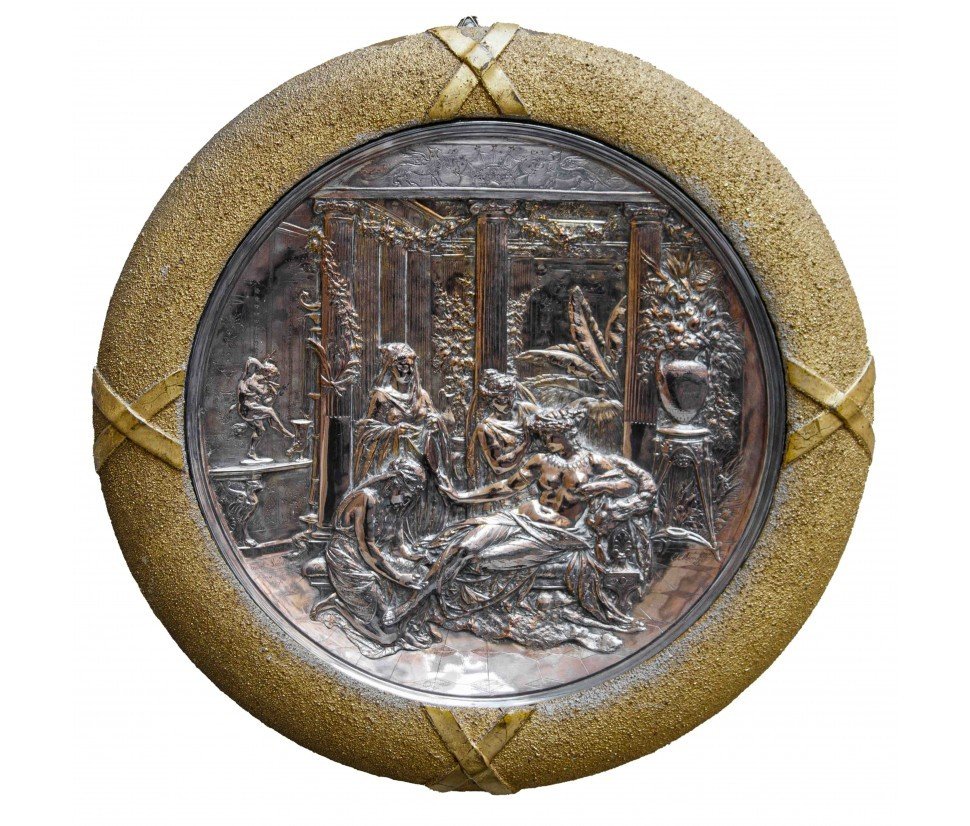

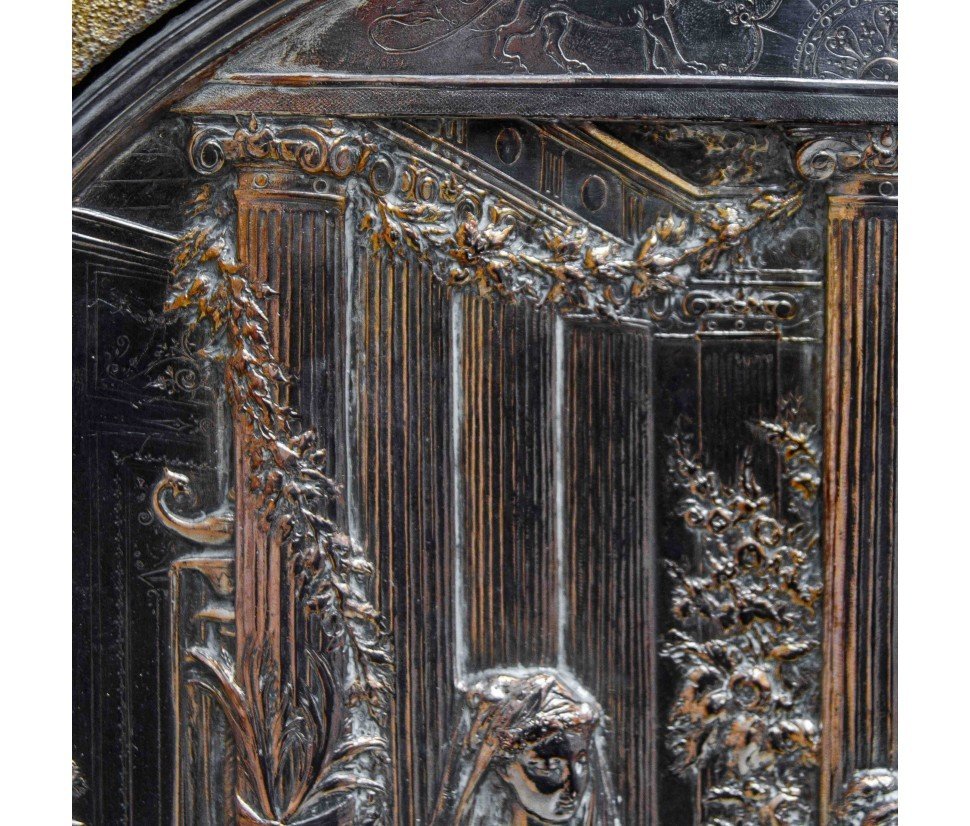

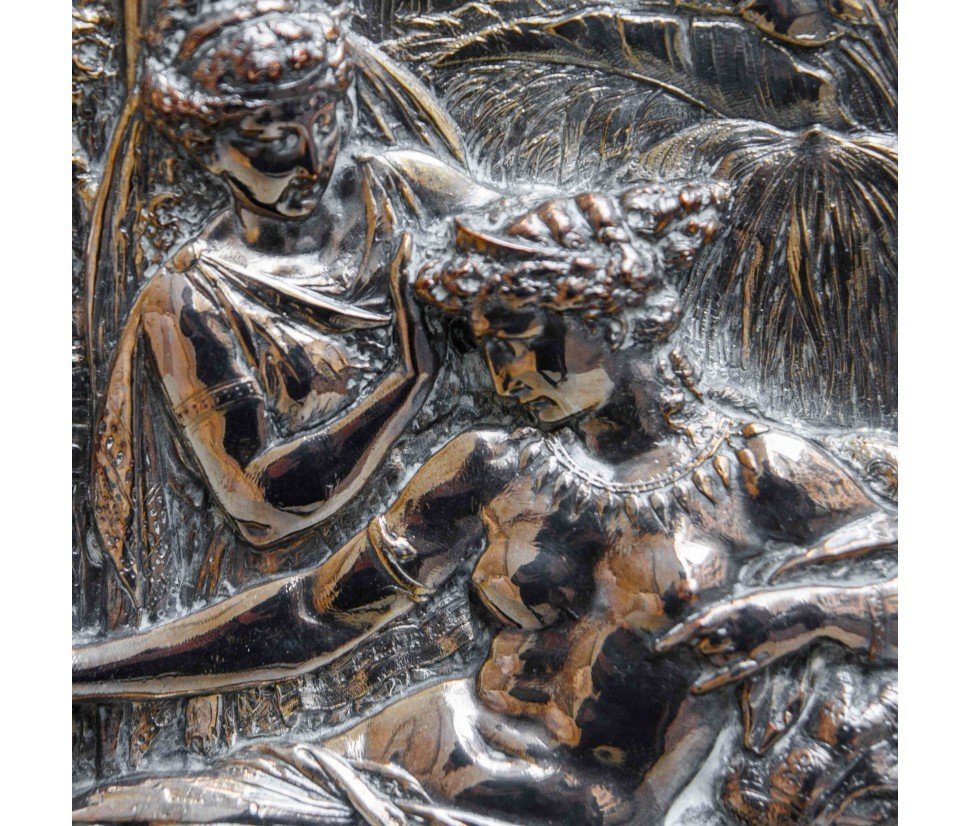









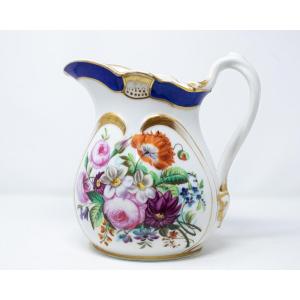















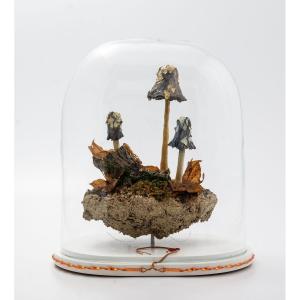





 Le Magazine de PROANTIC
Le Magazine de PROANTIC TRÉSORS Magazine
TRÉSORS Magazine Rivista Artiquariato
Rivista Artiquariato